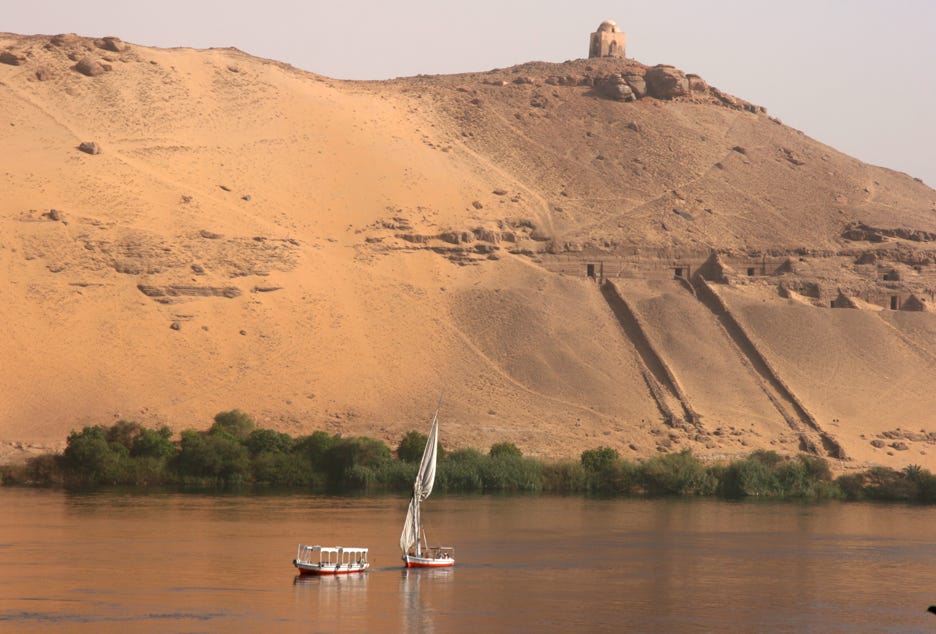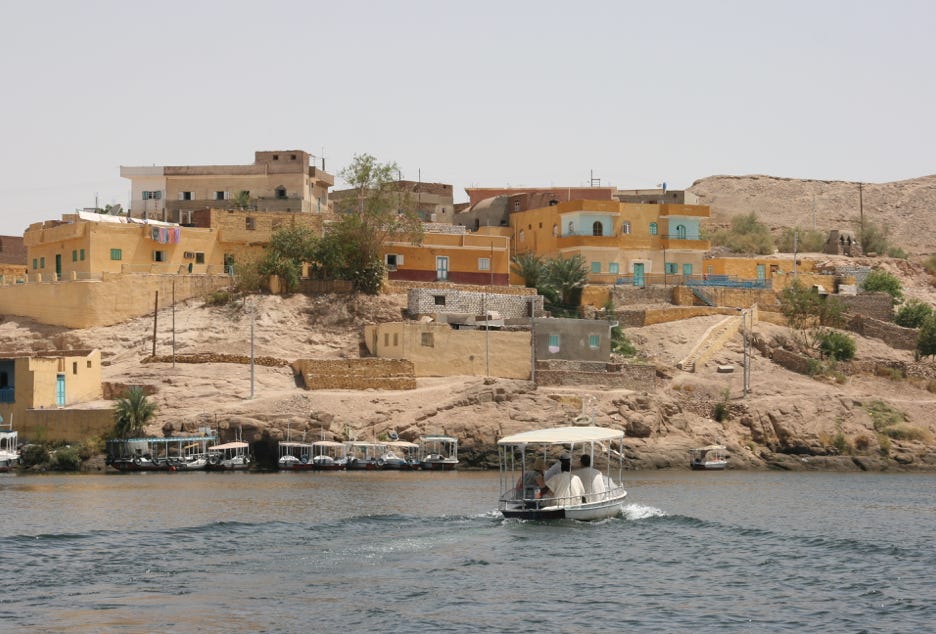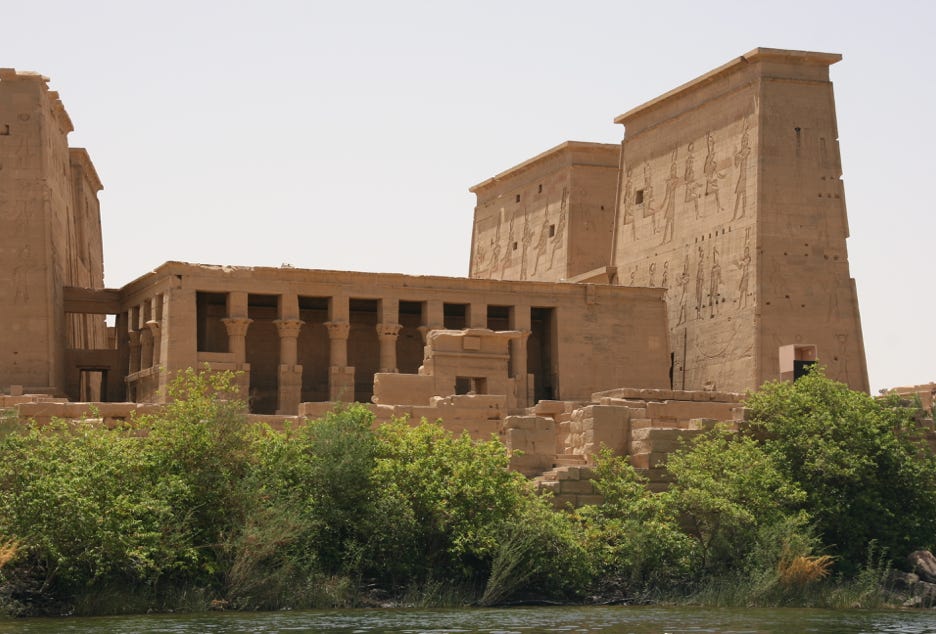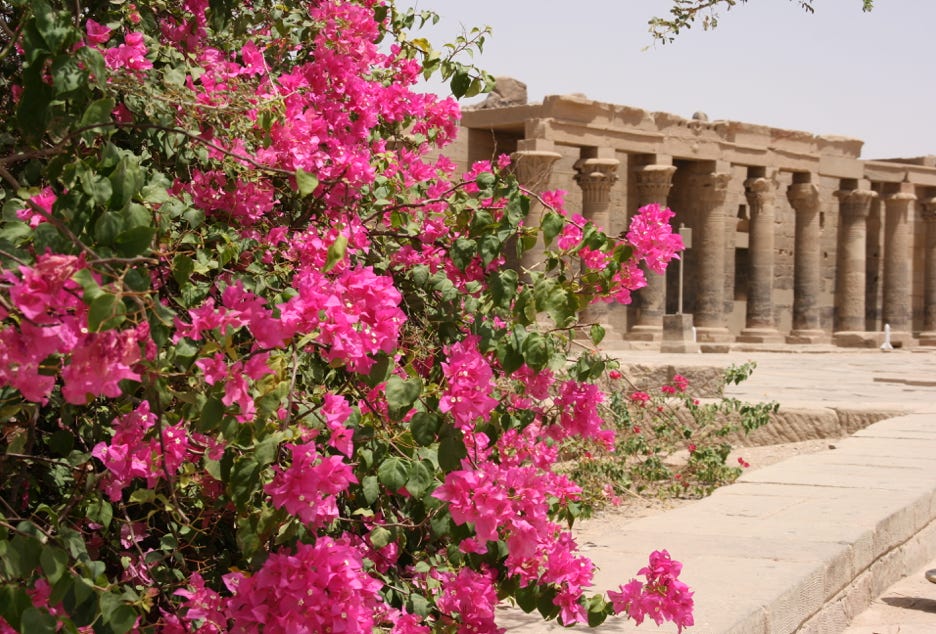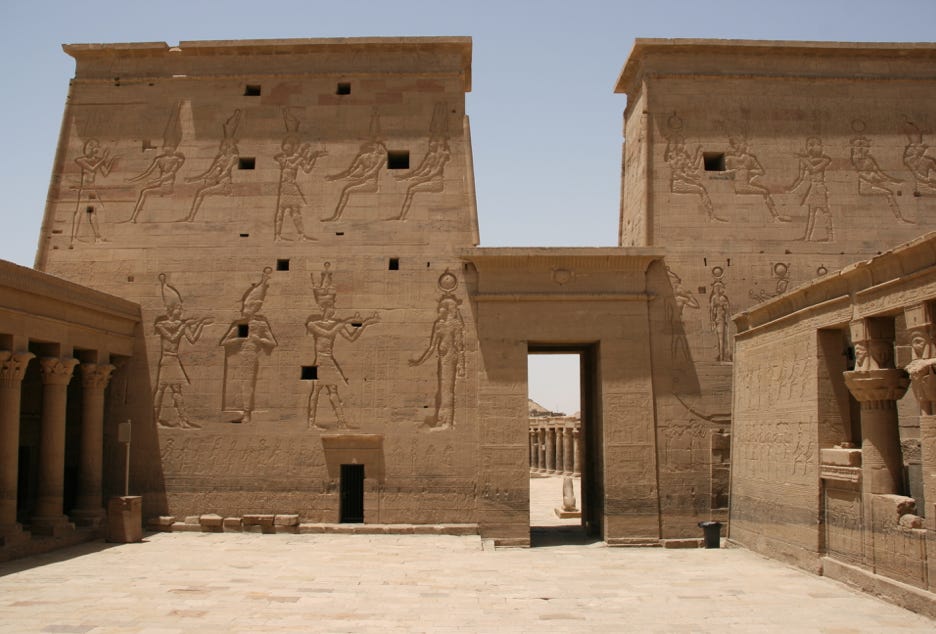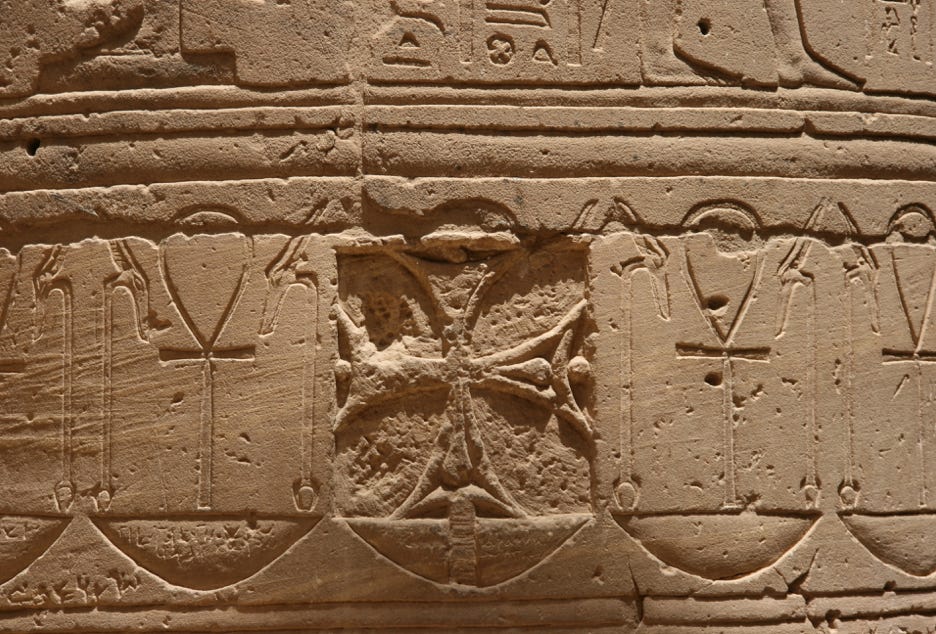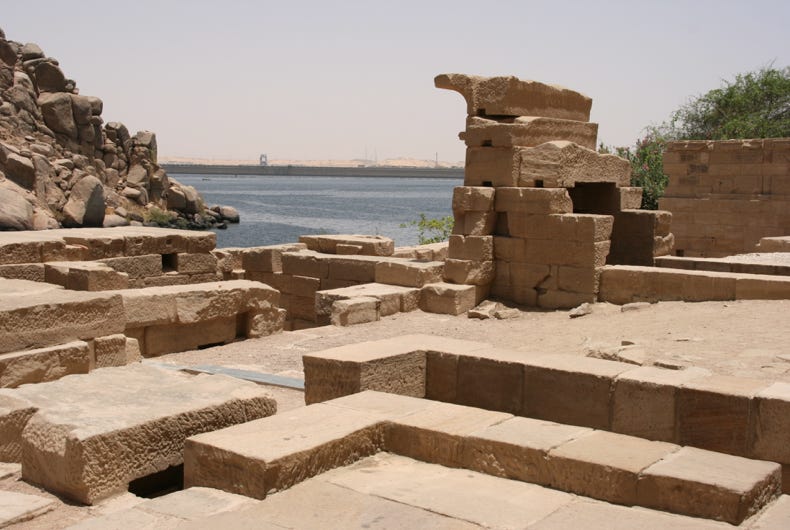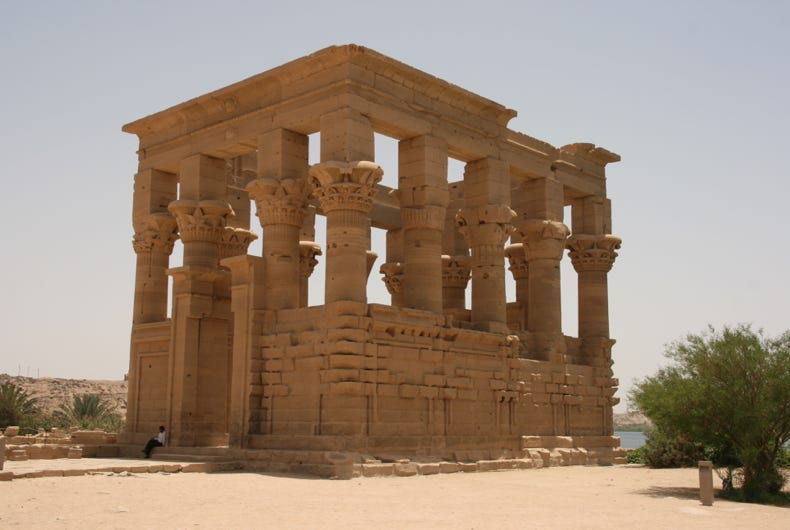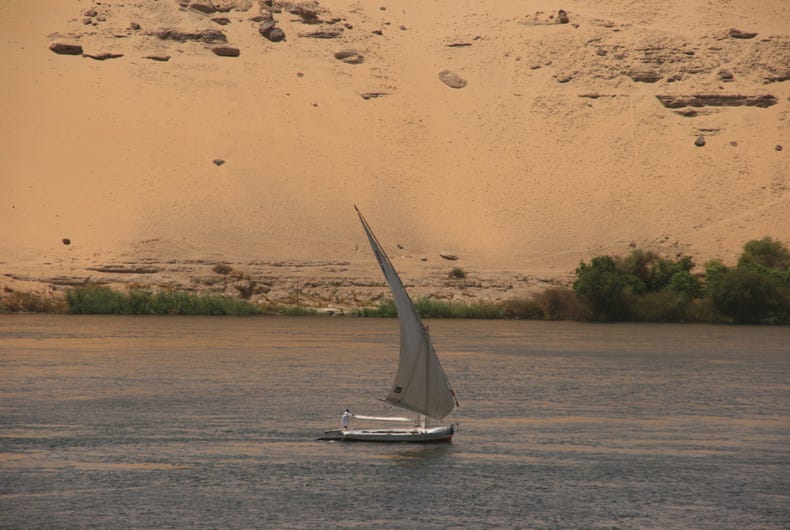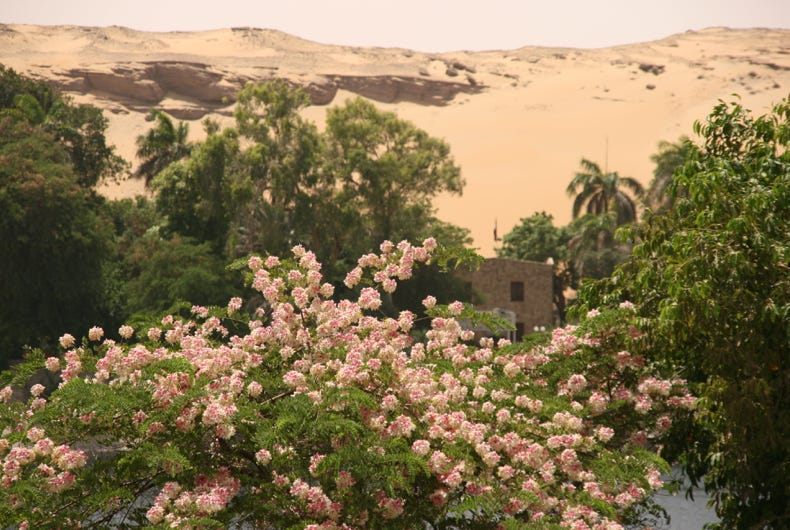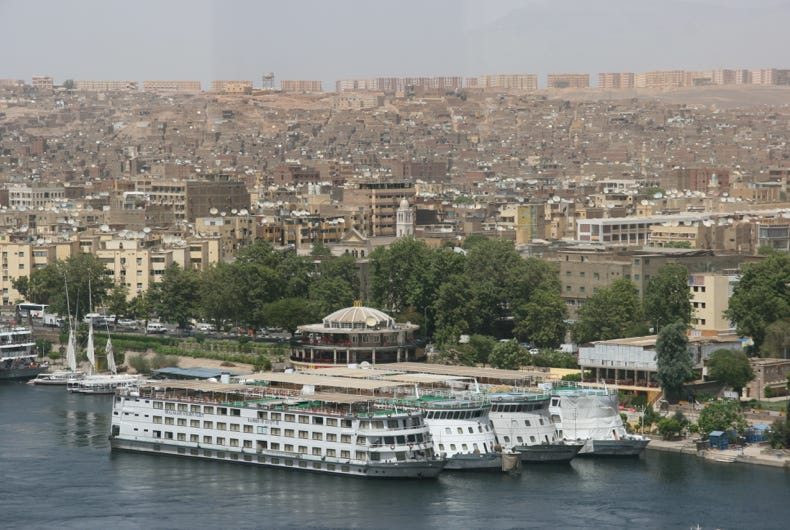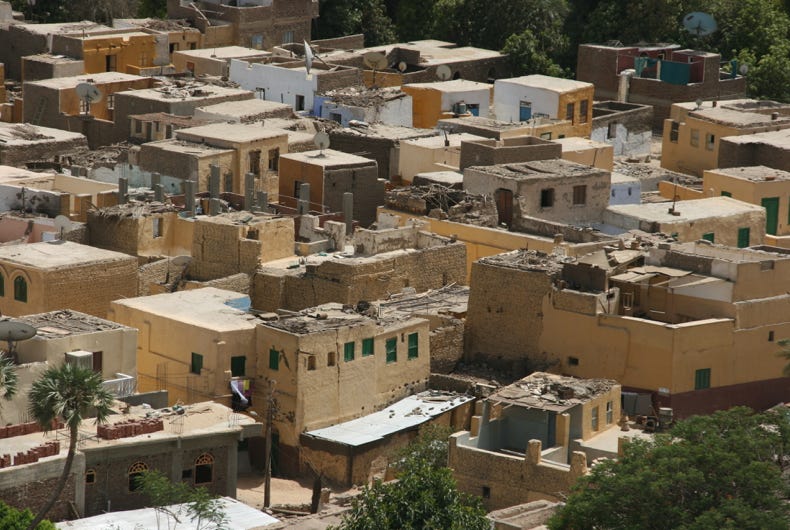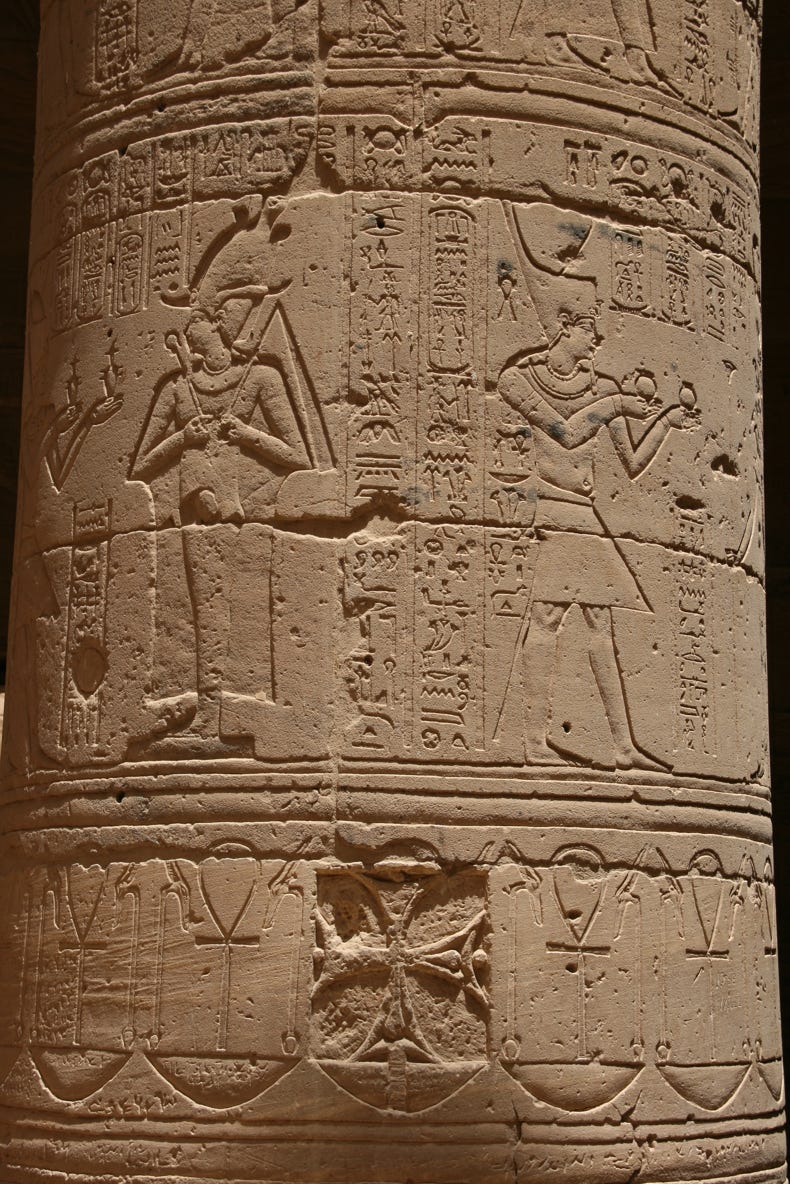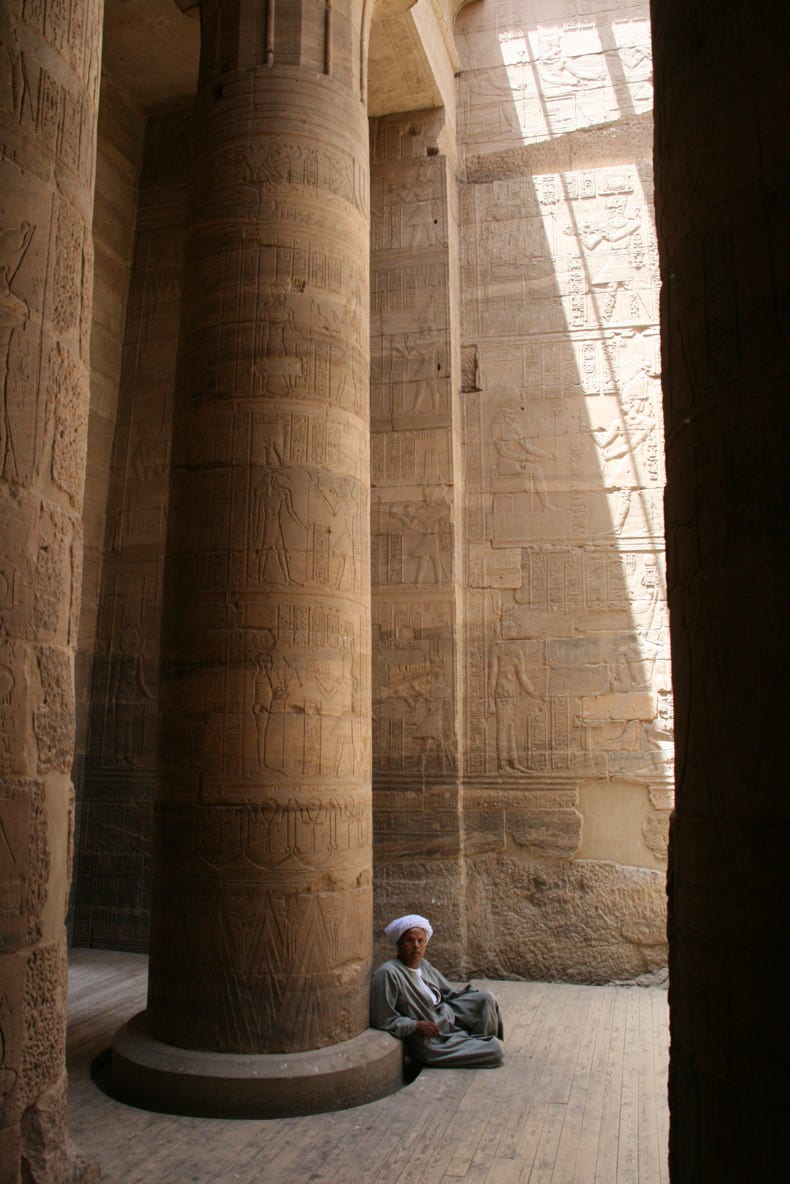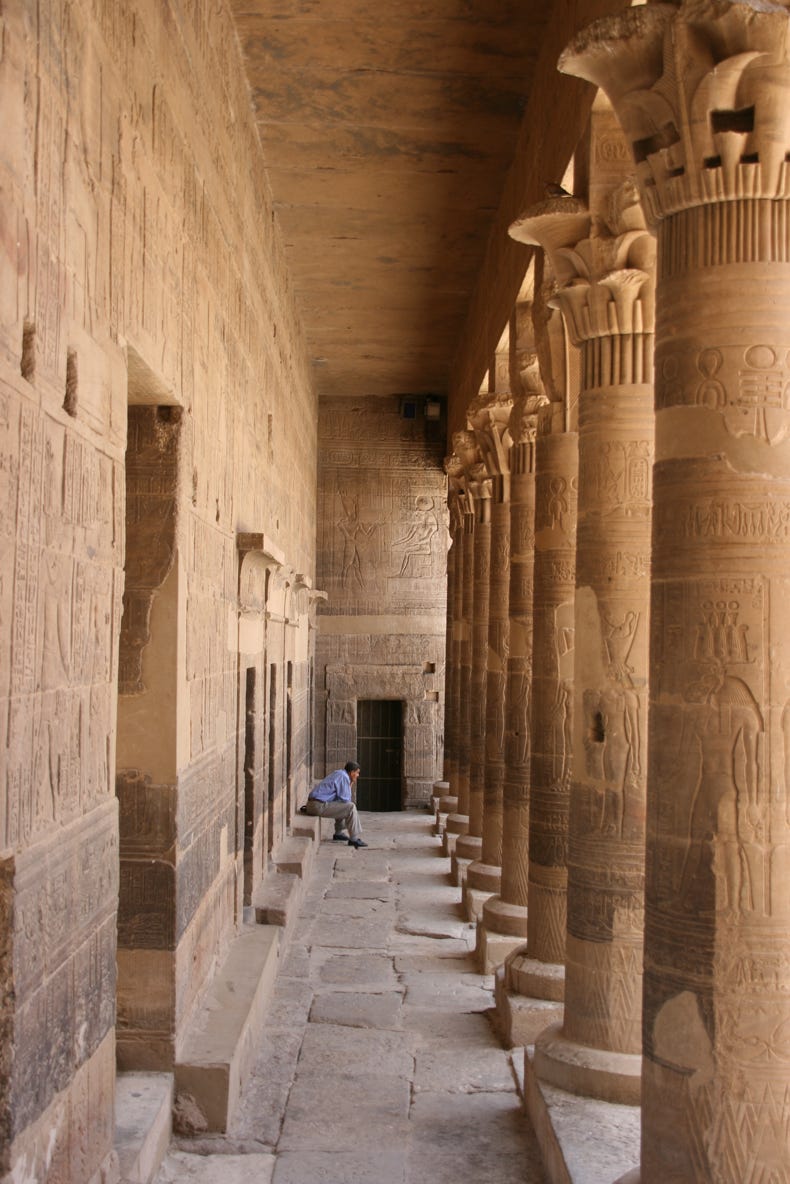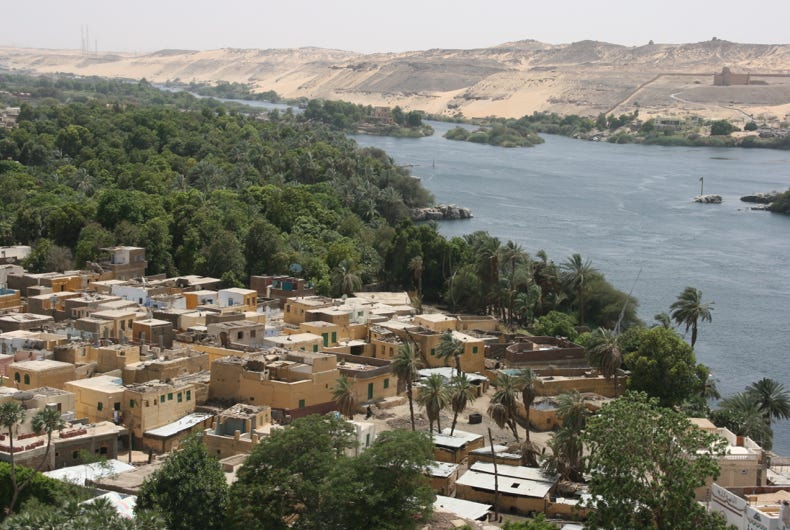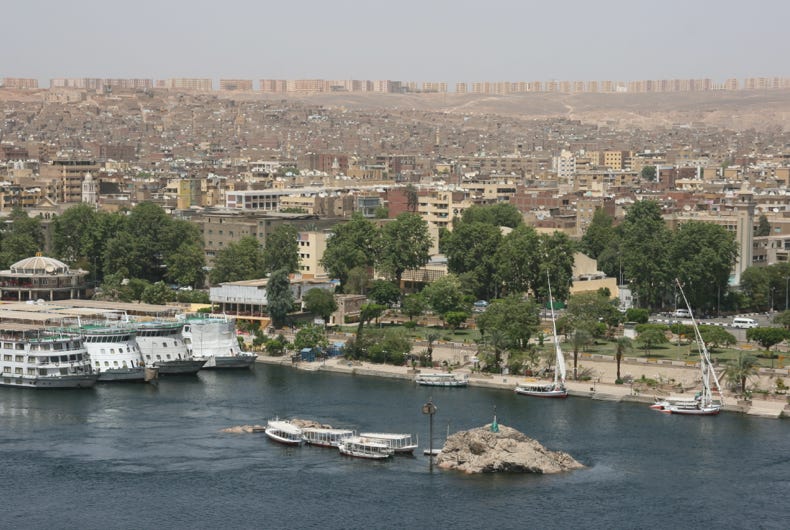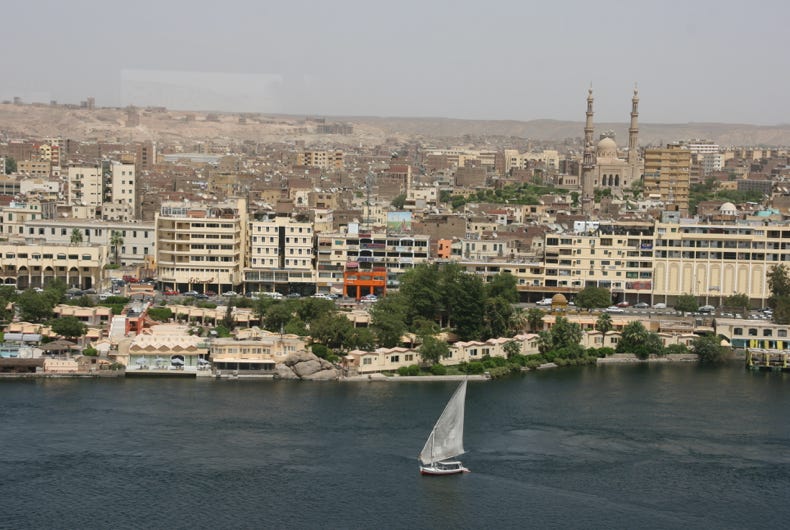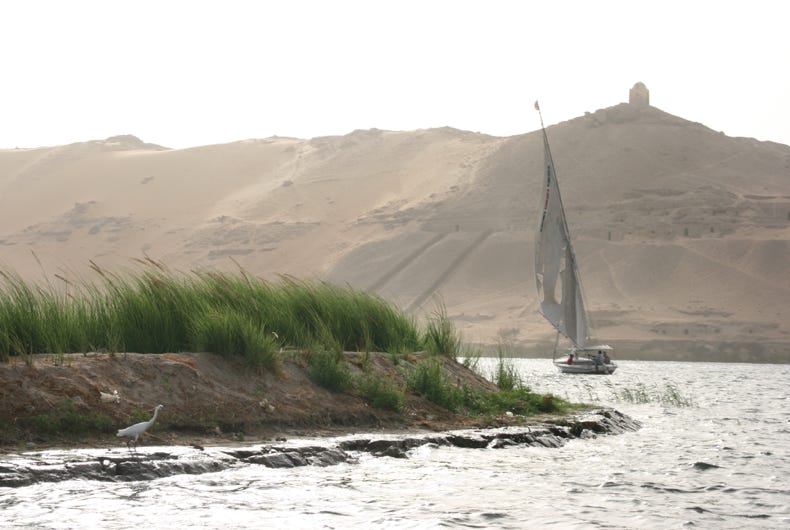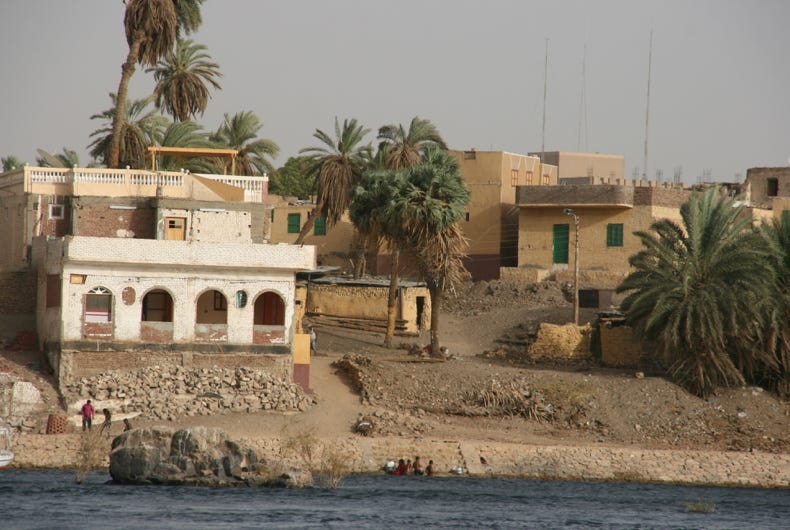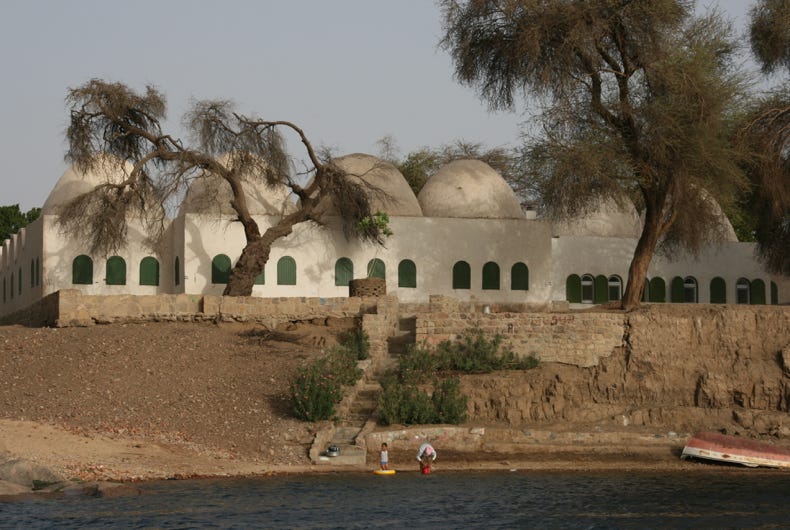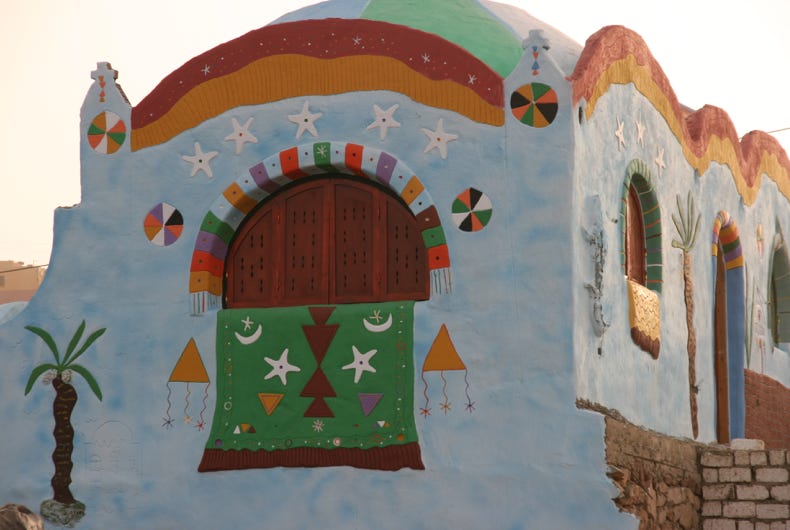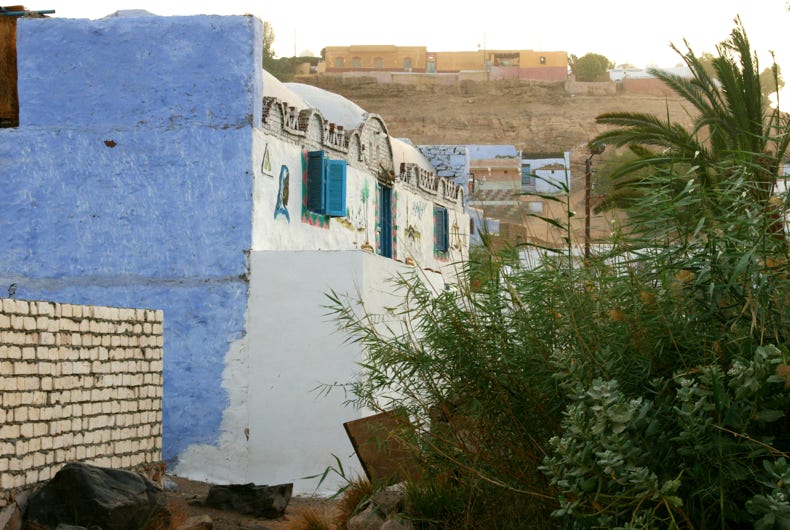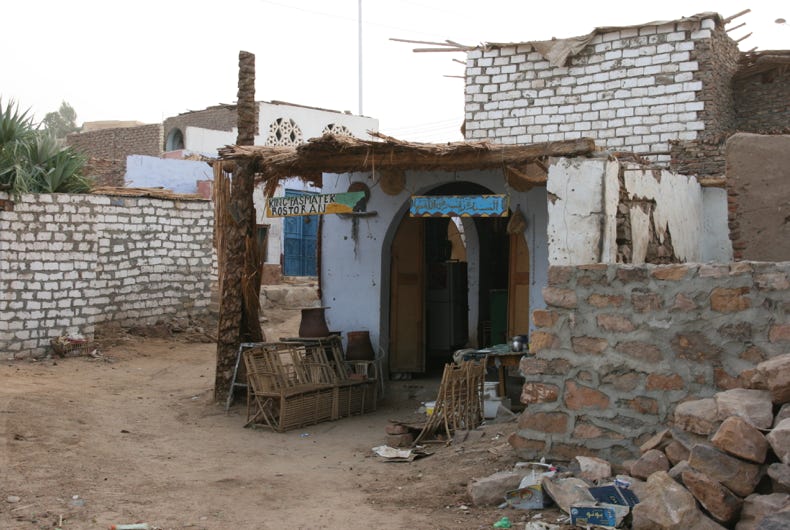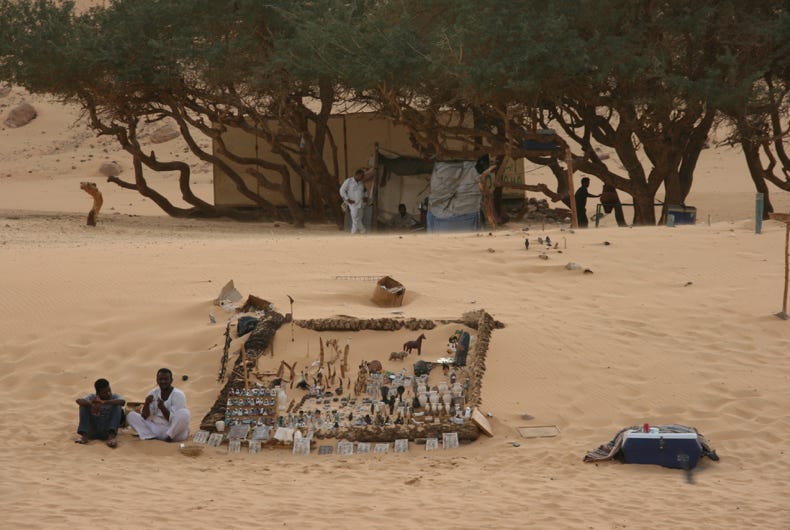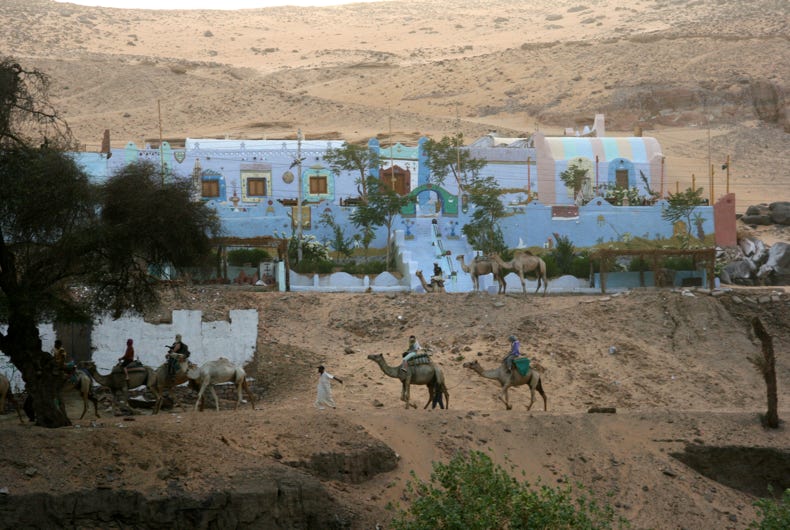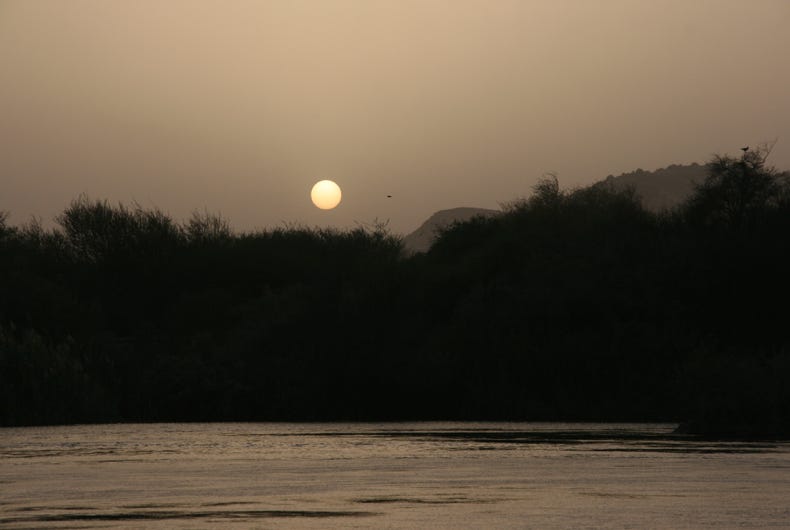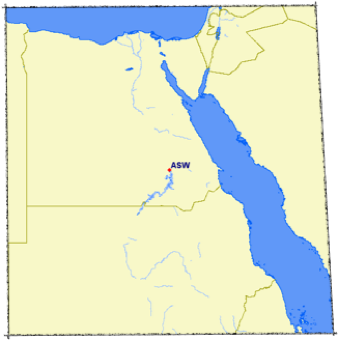


Aswan is outrageously picturesque. The scene in the top photo to the right was the first view I saw from my hotel window when I woke this morning, and the more I looked around today, the more I was amazed by the beauty of this place.
Fortunately, today was a bit cooler than yesterday, with temperatures climbing to ‘just’ 48°C. Surprisingly, I was able to feel and appreciate the cooler temperatures.
One of my priorities in visiting Aswan was to visit the Aswan High Dam, the environmental effects of which are a case study in my books, ‘Planet Geography’, ‘Our Dynamic Planet’ and ‘Our Planet’s Freshwater’. The dam is regarded as a site with military significance, and therefor the only way to visit is to be part of an organised tour. This was not a bad thing, because the itinerary took me to two other interesting places – the Temple of Philae and the Unfinished Obelisk.
To get to the dam, I first took the ferry across the Nile River from the hotel, gliding across what seemed like a mirror surface in the still morning air. Having reached the other side I didn’t have long to wait until my vehicle arrived, and I was soon on my way to the Aswan High Dam. The drive was not a long one, being only about 12 kilometres and crossing the older Aswan Dam, built in the early 1900s.
The visit to the Aswan High Dam was a fairly brief affair, involving just one stop at a point about half way across the dam wall. Nonetheless, the views were quite good, both of the hydro-electric generating plant and the huge Lake Nasser that extends all the way to the border with Sudan and then 150 kilometres beyond. The views were interesting mainly for the scale of the construction rather than their scenic beauty - until the Three Gorges Dam is completed in China, the Aswan High Dam will remain the world’s largest dam.
The second stop was the Temple of Philae. This large stone structure was built in ancient times, being dedicated to the god Isis. It was built on a small island that became submerged in 1902 when the older Aswan Dam was completed. Having been underwater for about 70 years, the dam was relocated to a new island stone by stone under UNESCO guidance during the 1970s to its present site, a truly impressive exercise. Needless to say, a small boat trip was necessary to reach the temple and explore it.
In the early Christian era, the temple was taken over by Coptic Christians who converted it into a Christian church. In actions that were reminiscent of the Taliban in Afghanistan almost 2000 years later, the Coptic Christians defaced many of the sculptures of the ancient Egyptian gods, especially focussing on the parts of the body that were seen to be important in reincarnation (the feet, legs, and arms), as well as some of the faces. Several examples of Coptic crosses were evident near doorways, although the decor remained overwhelmingly Egyptian.
Interestingly, I was told that the crosses (which were Maltese crosses in form) were derived from the ancient Egyptian hieroglyph for ‘key of life’, although to me they seemed identical with the crosses used by the Knights of the Templar during the era of the Crusades. The Templar connection has been the subject of speculation by some researchers who hypothesise that the Ark of the Covenant was taken from Jerusalem to Axum in Ethiopia via Aswan, and that the Templars followed the route in an attempt to find the Ark.
My third stop was more interesting than I expected it to be. It was an ancient granite quarry that supplied granite for temples downstream in places such as Luxor and Cairo. Apart from the usual remains that one would expect to find in any ancient quarry, the most interesting feature was an unfinished obelisk. Still attached on one side to the underlying rock, the obelisk would have been 42 metres high and would have weighed 1168 tonnes if the discovery of some flaws had not stopped work on it.
As the heat of the heat reached its peak, I returned to the hotel to rest for a couple of hours. In fact, it turned into a very busy period of answering e-mails, although I did take the time to go to the top floor and take in the spectacular views in all directions of Aswan city, the river, the boats, the nearby villages and the surrounding sand dunes. The views were breathtakingly clear, although I did feel a little guilty that I was enjoying such beautiful scenery in air conditioned comfort.
As dusk approached, I decided to venture out again for a short ride on a small boat on the Nile River to take in the evening sunset views. By this time, the hot wind had become quite gusty, blowing tiny particles of sand through the air. Nonetheless, the trip around the islands in the river was thoroughly enjoyable, and even included a brief stop in a fascinating Nubian village.
I wish I could share more of the photos I took in and around Aswan today with you. For those who actually enjoy my slide shows, I think I have treat in store for you following today’s travels.
Today was a relatively relaxed day following the intensity of yesterday. Tomorrow will be ‘payback’ time, as I must rise at 3am to catch the 4am vehicle convoy to Abu Simbel. Tomorrow promises to be a long and hot, but hopefully enjoyable, day.

